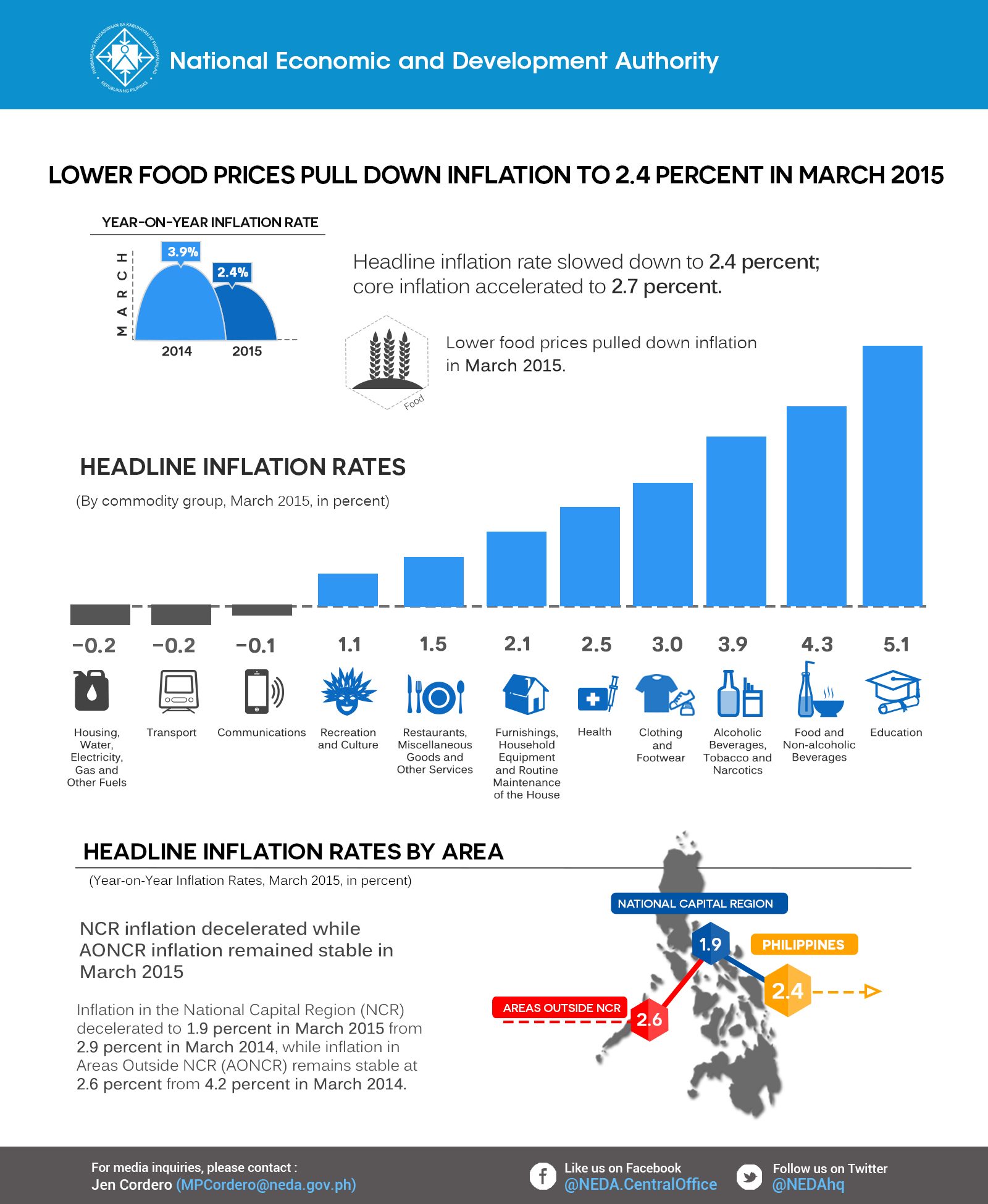SUMMARY
This is AI generated summarization, which may have errors. For context, always refer to the full article.

MANILA, Philippines (UPDATED) – Have you noticed that rice, meat, and bread seem reasonably priced these days?
Such prices cushioned inflation, which was at 2.4% in March, the National Economic and Development Authority (NEDA) reported Tuesday, April 7.
Food inflation could have been lower if not for consumers’ high demand for vegetables and fish during the Lenten season, NEDA Director-General Arsenio M. Balisacan noted.
Last month’s headline inflation was lower than March 2014’s 3.9% and February 2015’s 2.5%.
Affordable rice prices are attributed to the overall favorable rice stocks inventory of the country.
Local bread producers also contributed to within target inflation, as they committed to cut down prices since transportation and production costs declined due to cheaper fuel.
Within target
Overall, headline inflation for the first 3 months of 2015 averaged 2.4%, still within the inflation target range of 2% to 4% set for this year by the government.
“Inflation remained low and stable in the first 3 months of the year in line with expectations over the policy horizon, which is likely to support consumption growth,” Balisacan said.
The March inflation reading was within the BSP’s range forecast of 2.1-2.9 percent for the month, Bangko Sentral ng Pilipinas (BSP) said.
NEDA noted, however, that Inflation among non-food items rose slightly.
Inflation among non-food items rose to 0.9% in March from 0.6% in February 2015 this year, due to softer declines in the price indices of electricity, gas, and other fuels, along with price and operation of personal transport equipment.
“The continuing decline in international oil prices is also a positive development for the country considering our dependence on imported oil,” Balisacan said.
Core inflation, which excludes selected volatile food and energy prices, rose 2.7% in March 2015 from 2.5% in February this year, a slower movement compared to the 2.8% registered in the same period in 2014. It averaged at 2.5% in January to March 2015.
A relatively stable peso – given the country’s strong external position on the back of strong remittances, rising BPO (Business Process Outsourcing) earnings and FDI (Foreign Direct Investment) inflows, ample international reserves, and a manageable level of external debt – contributed to stable domestic prices.
Mapping inflation

Per region, inflation in the National Capital Region (NCR) decelerated to 1.9% in March 2015 from 2.2% in February 2015, and 2.9% in the same period a year ago, due to slower inflation in several major commodity groups like food and non-alcoholic beverages.
Outside NCR, inflation remained stable at 2.6%, slower than the 4.2% recorded the previous year.
Balisacan said that the current episode of mild El Niño and power woes still pose risks to inflation, but efforts are continuing to ensure that appropriate policy actions are implemented to temper inflationary pressures over the near- to medium-term.
BSP Governor Amando M. Tetangco Jr. said that the latest inflation reading is in line with the BSP’s assessment of a manageable inflation environment over the policy horizon.
The central bank will also keep a close watch on price developments and the evolving inflation outlook. – Rappler.com
A shopper browsing a supermarket’s aisle image from Shutterstock
Add a comment
How does this make you feel?
There are no comments yet. Add your comment to start the conversation.